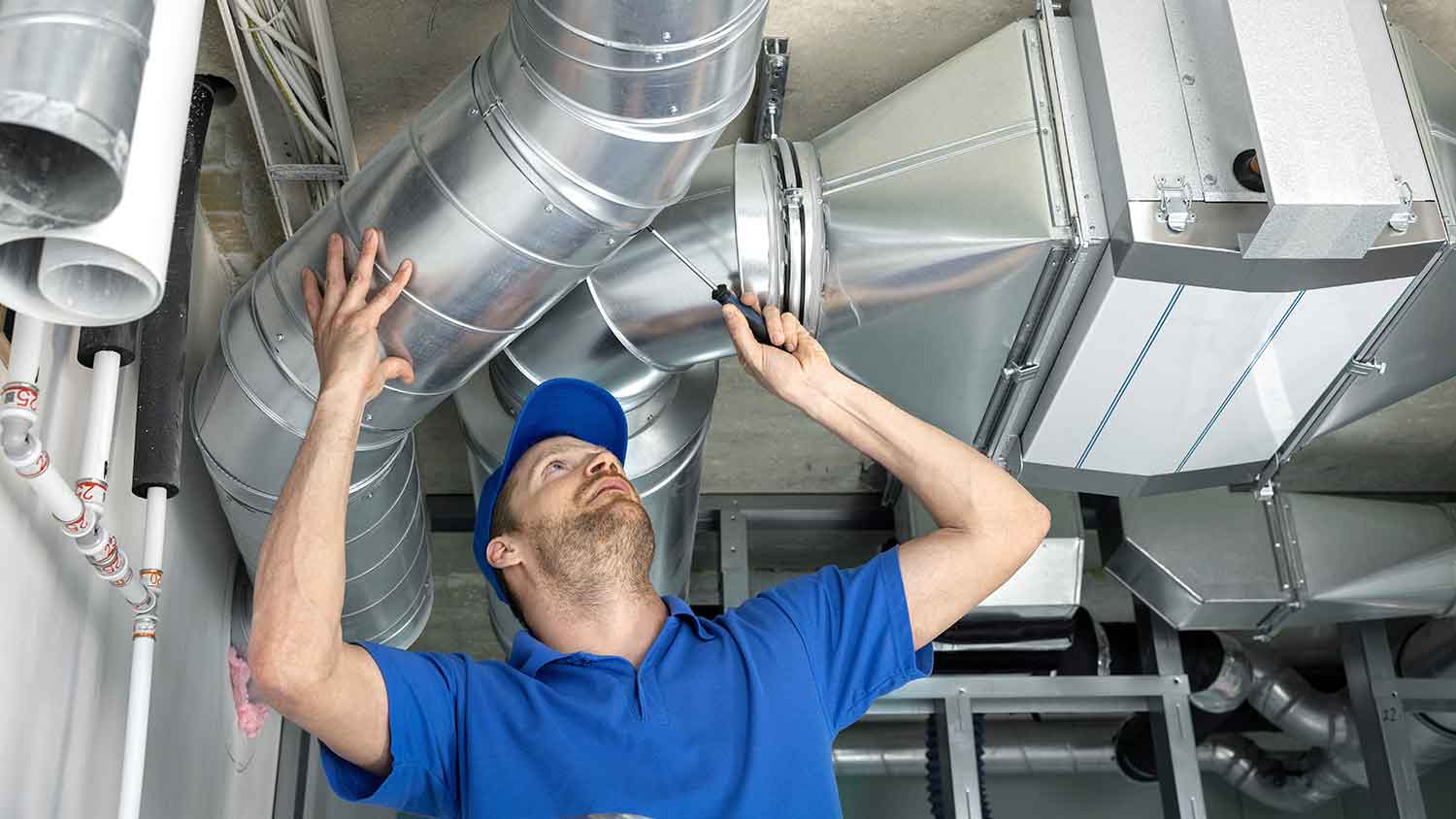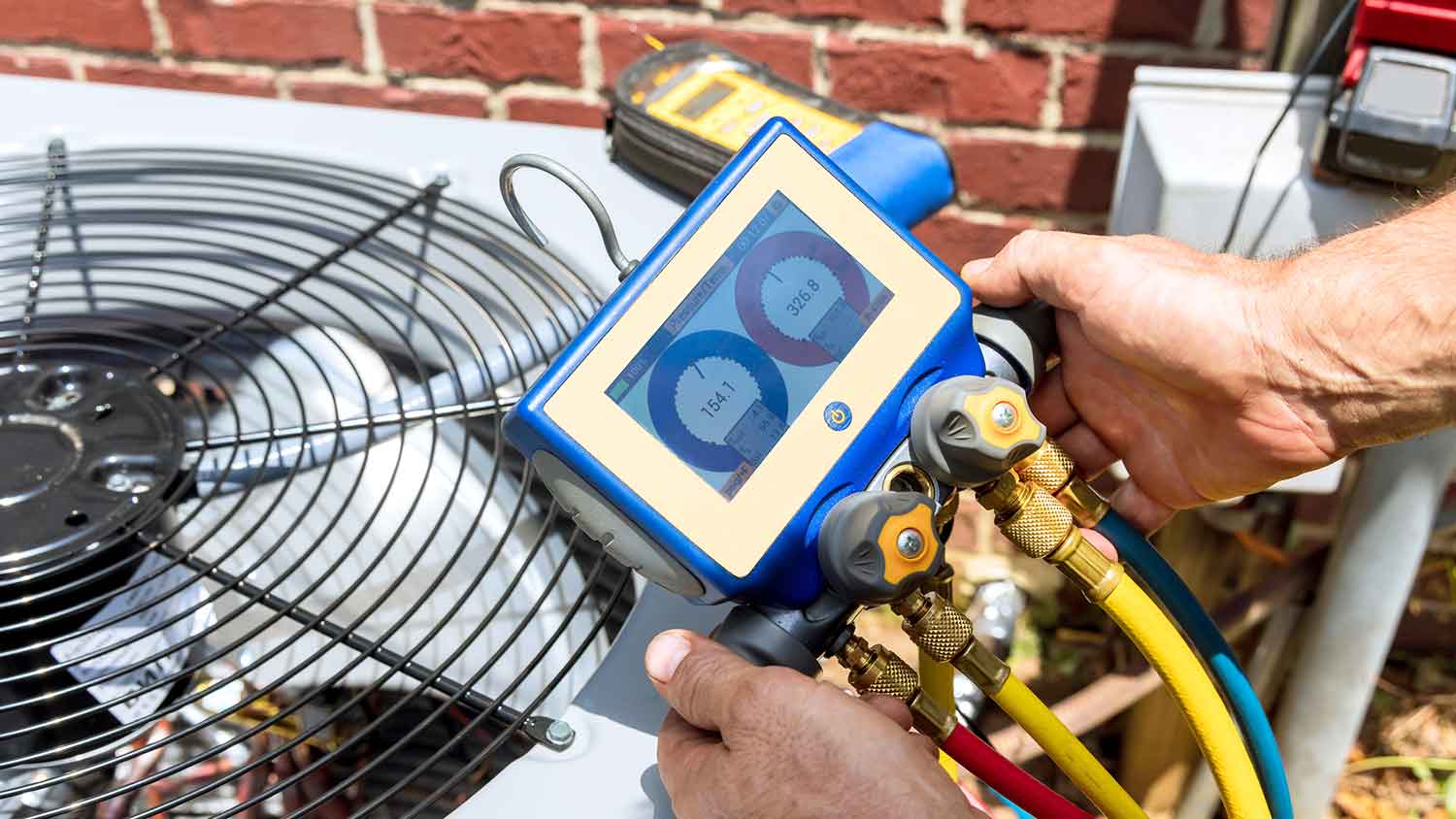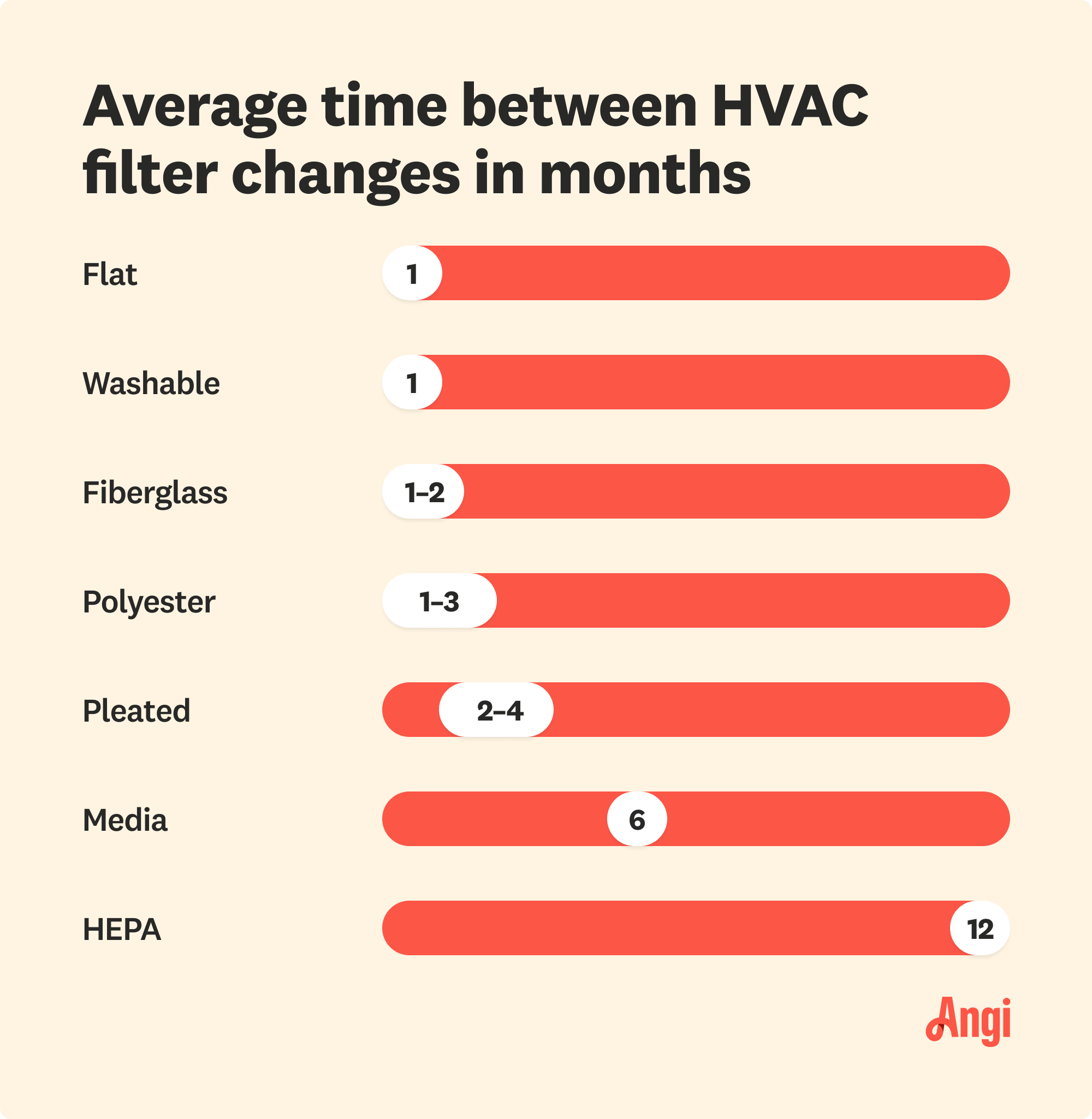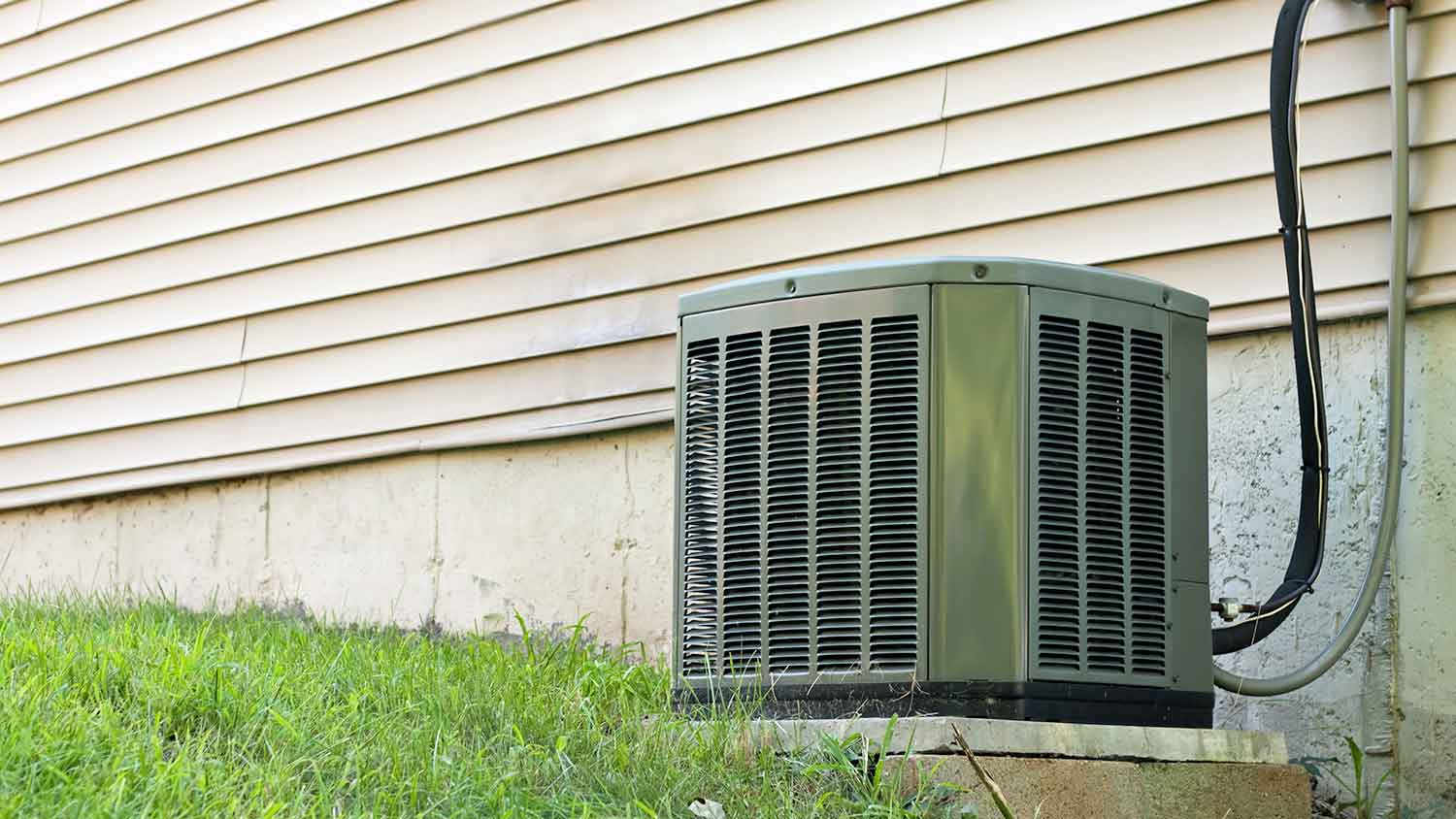9 Reasons Your AC Is Blowing Cold Air but the House Is Still Hot
Let fixing your AC be a breeze


If your home lacks insulation or has air leaks, your AC won’t cool your home efficiently.
Replacing the air filter or cleaning the coils could be a simple solution.
An AC unit that’s too small or too old might not be powerful enough to cool your home.
Troubleshoot the issue yourself, but always call an HVAC pro if you suspect a refrigerant leak or parts issue.
When your AC is blowing cold air but the house is still hot, it can be frustrating, but there’s no reason to sweat. A local pro can pinpoint the issue quickly and easily, and you might even be able to sniff out the problem on your own. You may have insufficient insulation and air leaks, your thermostat might need recalibrating, or you might need a new filter. Learn about more common causes and what you can do to fix them.
Insufficient Insulation and Air Leaks
If you have gaps on the sides of your windows and doors, cold air might be leaking out, and hot air might be seeping in. A lack of insulation in your attic and throughout your home can also cause cold air to leave your home quickly. When your AC system has to work harder, it uses more energy to cool your home, increasing your utility bills.
How to Identify and Fix the Problem
Check for air leaks and gaps around your doors, windows, and electrical outlets. If you feel warm air seeping in during the hot months, you may have air leaks. If you feel cold air and draftiness in the cooler months, the same applies.
Look to see what attic insulation and basement insulation you have, especially around your rim joists and in crawl spaces. You may also need to insulate your garage. If you see insulation that’s crumbling, peeling, or discolored, you may need to replace or reinforce it.
Remove outlet covers to see if you have insulation in your walls. If it feels hot upstairs and cold downstairs, or you notice uneven temperatures and drafts between rooms, you may not have insulation in your walls.
Contact a local insulation company to help optimize insulation in your attic, basement, and other key areas of your home. The average cost to install insulation is $1,820 but can reach up to $4,400 depending on the type of insulation and size of the space.
Duct Leaks

If you have leaks in your air ducts, cool air isn't being routed throughout your home. Instead, it escapes or goes to your attic. Ductwork can shift, rust, separate, and get holes over time. If the AC is blowing cold air but the house is still hot, your ductwork could be the issue.
How to Identify and Fix the Problem
Take note if you experience uneven heating throughout your home, such as if it’s warm in one room and cold in another. The uneven heating is often a sign that your vents or ducts are the problem.
Look at the visible ductwork in your basement. See if you notice any gaps, holes, or separation.
Contact a local HVAC repair pro to come look at your ductwork and make repairs. Trying to patch HVAC ducts on your own is unlikely to offer lasting results.
Closed or Blocked Vents
Closing your vents can cause your air conditioner's blower to work overtime in moving cool air throughout your home. It takes longer to cool a home when there’s more pressure in the duct system.
How to Identify and Fix the Problem
Check to make sure all of the vents are open throughout your house. Open them if they are not already.
If AC performance doesn't improve, you may have a block in your vent or ductwork. Contact a local HVAC technician to come check it out.
Your Thermostat Needs Recalibration
Your AC might not be working properly if your thermostat is out of batteries or has faulty wiring. If your AC is blowing cold air but the house is still hot, you may need to recalibrate your thermostat to show the correct temperature.
How to Identify and Fix the Problem
Tape an accurate thermometer on the wall next to your thermostat.
Wait 30 minutes and check to see if the wall thermostat and taped thermometer show the same temperature.
If they have different readings, recalibrate your thermostat according to the manufacturer's instructions. If recalibrating the thermostat doesn't resolve the issue, you may need to contact a local heating and cooling pro.
Leaking Refrigerant

Refrigerant cools the air before it gets sent throughout your house. The system recirculates refrigerant, so you will only need more if there’s a leak. AC Freon leaks can be dangerous, with exposure potentially leading to coughing, vomiting, dizziness, headaches, and nausea, according to the Missouri Poison Center. So, be sure to turn off your system immediately and call an HVAC pro if you suspect a refrigerant issue.
How to Identify and Fix the Problem
Watch for signs of a refrigerant leak: your AC is making a high-pitched hissing or bubbling sound, you have higher utility bills, it takes the AC longer to cool the home, or you smell a sweet, chemical-like aroma from your vents.
If you suspect a refrigerant leak, turn off your AC unit immediately because Freon is a health hazard. You'll need to contact a local air conditioning repair company who can fix the leak. Refrigerant leaks are not a DIY-friendly project due to health risks.
The EPA prohibits handling AC refrigerant without a license. This is one DIY project you shouldn’t try—having a licensed AC repair technician refill your AC refrigerant is the safest (and legal) option.
Dirty Condenser Coils
Your outdoor unit has a condenser that disperses the heat from inside your home. Sometimes, the coils are clogged or dirty. Plants, dirt, or other debris covering your AC might impact its function.
How to Identify and Fix the Problem
Turn off your AC system at the circuit breaker before touching or cleaning any parts of your AC unit to avoid damage and injury.
Go to your outdoor AC unit and look for any fallen branches, debris, or dirt. Clean your AC coils by brushing or blowing away debris and spraying the coils.
You can also contact a local HVAC company to look at the issue to find the root cause of the problem.
Air Filter Is Dirty

You need to clean or change the AC filter at least once every three months. Once the filter reaches its limit of dust, debris, and pet dander, your AC system slows its function and limits its air movement.
How to Identify and Fix the Problem
Find your air filter on your indoor air conditioning unit. It's located between the return duct and the air handler.
If it's dirty, clean your AC air filter or replace it with the same size and type of filter.
Restart your AC unit and see how it performs.
AC Unit Is Too Small

An air conditioner that's too small for your home won't generate enough cool air. Whether you've recently added a room to your home or have an older AC unit, the size might be the issue.
How to Identify and Fix the Problem
Hire an HVAC professional to calculate the size of the air conditioner you need for the square footage of your home. Replacing an AC unit costs anywhere from $3,900 to $8,000.
AC Unit Is Old or Worn Out
If your system isn't working optimally and is approaching the end of its lifespan—10 to 15 years—it might be time for a replacement. If you live in a home with improper insulation or air leaks, your air conditioner might not last as long because it's working harder to cool your entire home.
How to Identify and Fix the Problem
If you have an older AC system or notice ongoing problems, it may mean it's time to replace your AC unit.
Contact at least three local AC companies to give an estimate. Consider what type of air conditioner might be right for your home.





- Furnace Repair
- Air Conditioning Repair
- HVAC Repairs
- Furnace Installation
- Wood & Pellet Stove Repair
- Dehumidifier & Humidifier Repair
- Heat Pump Companies
- Swamp Cooler Repair
- Wood Stove Services
- HVAC Companies
- Commercial A/C Repair
- Geothermal Installation
- Air Conditioning Installation
- Boiler Repair
- 24 Hour Furnace Repair
- Geothermal Repair
- Heat Pump Repair
- Humidifier Installation
- Thermostat Repair
- Thermostat Installation
- Nest Installation
- Heating & Cooling
- Heating Repair
- Furnace Cleaning
- Furnace Tune-Up
- HVAC Technicians
- Subcontractors
- Furnace Maintenance
- Plumbing & Heating Companies
- Wood Stove Inspection
- Mini Split Installation
- Wall Heater Repair
- Duct Installers











